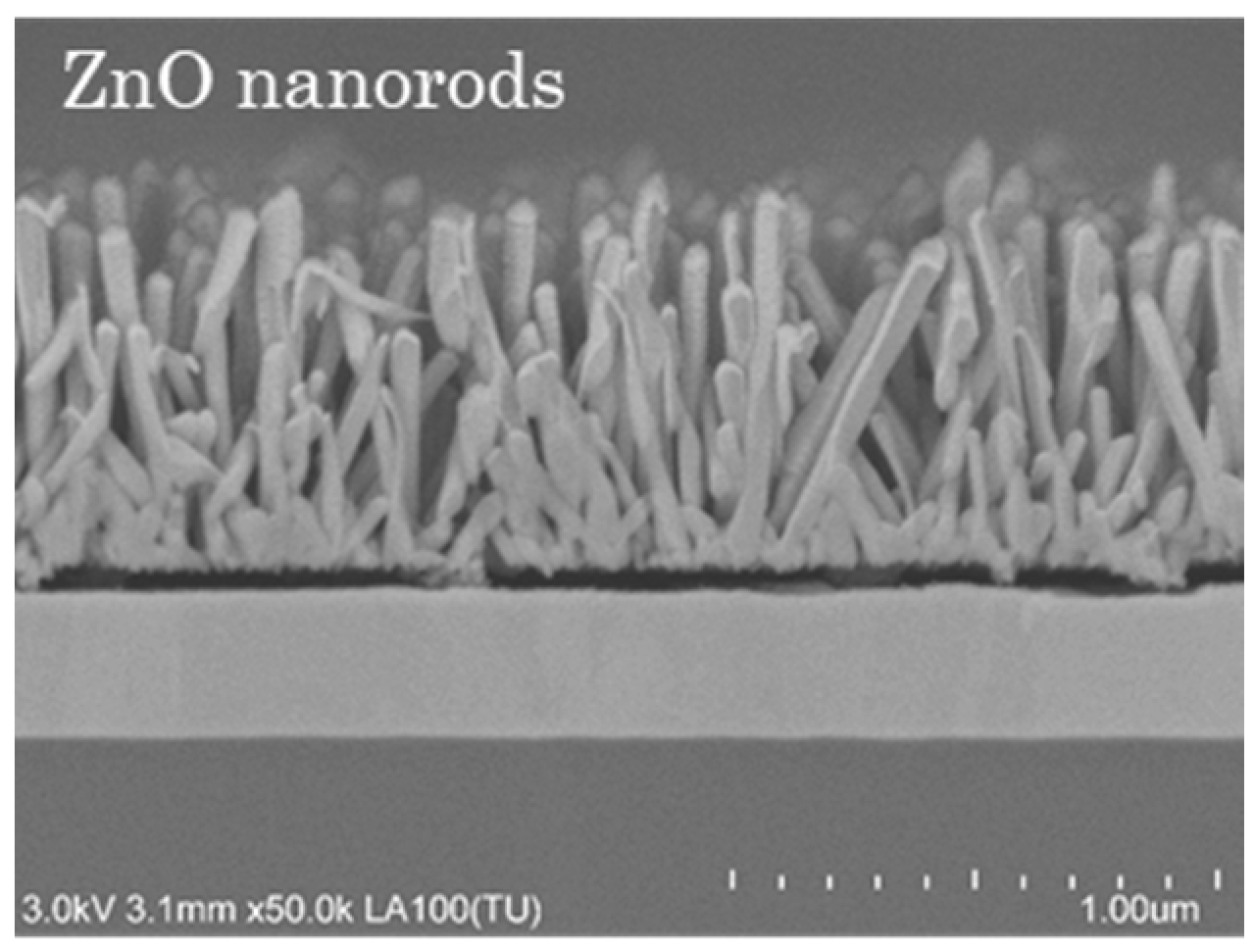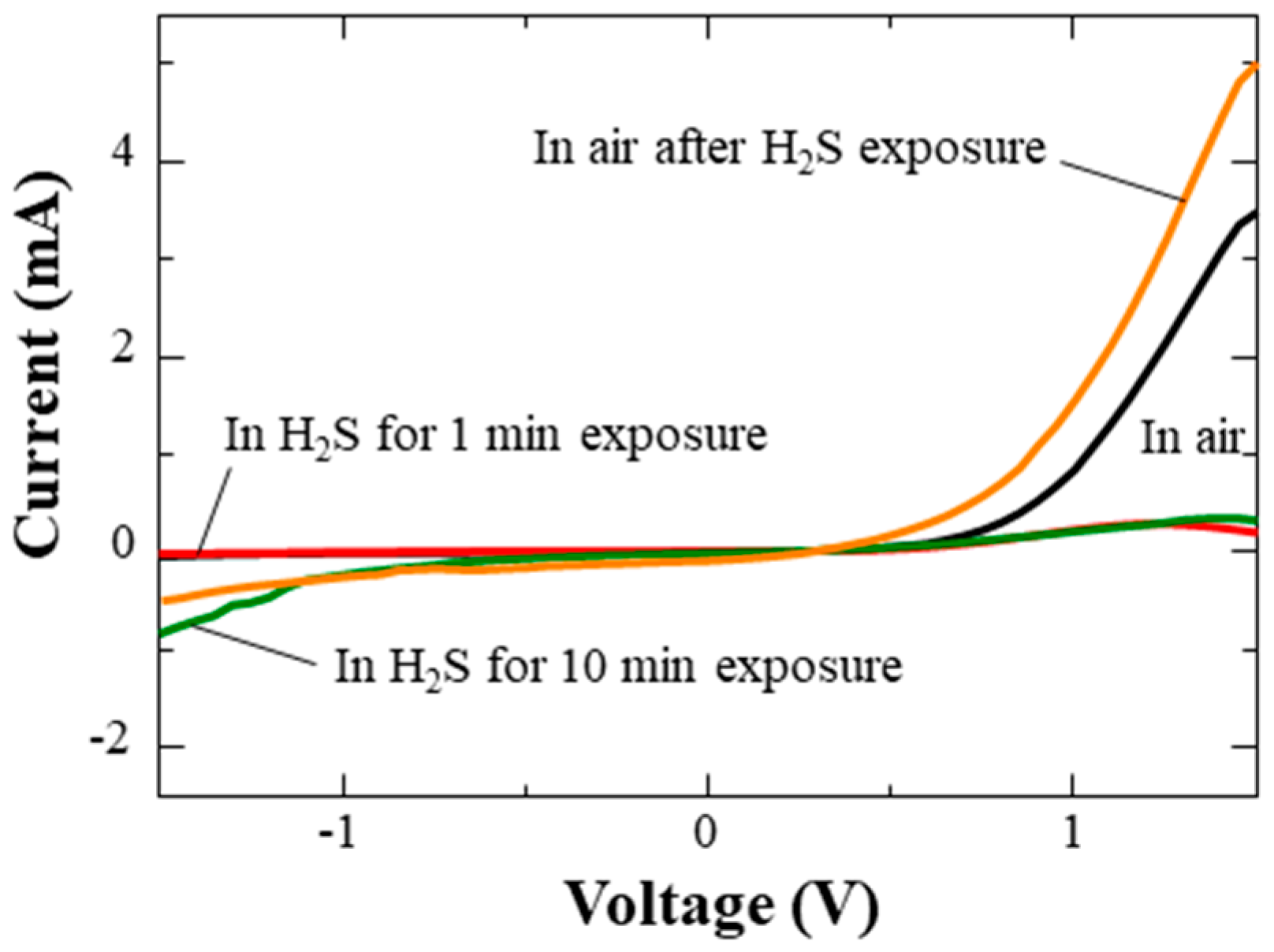H2S Sensing Properties of a Diode-Type Device Using ZnO Nanorods Coupled with CuO Nanocrystals †
1. Introduction
2. Experimental
3. Results and Discussion
Acknowledgments
Conflicts of Interest
References
- Tamaki, J.; Maekawa, T.; Miura, N. , Yamazoe, N. CuO-SnO2 element for highly sensitive and selective detection of H2S. Sens. Actuators B Chem. 1992, 3, 197–203. [Google Scholar] [CrossRef]
- Gaddam, V.; Kumar, R.R.; Parmar, M.; Nayak, M.M.; Rajanna, K. Synthesis of ZnO nanorods on a flexible Phynox alloy substrate: Influence of growth temperature on their properties. RSC Adv. 2015, 5, 89985–89992. [Google Scholar] [CrossRef]
- Mikami, K.; Kido, Y.; Akaishi, Y.; Quitain, A.; Kida, T. Synthesis of Cu2O/CuO nanocrystals and their application to H2S sensing. Sensers 2019, 19, 211. [Google Scholar] [CrossRef] [PubMed]



© 2019 by the authors. Licensee MDPI, Basel, Switzerland. This article is an open access article distributed under the terms and conditions of the Creative Commons Attribution (CC BY) license (https://creativecommons.org/licenses/by/4.0/).
Share and Cite
Kida, T.; Kido, Y.; Shinkai, T. H2S Sensing Properties of a Diode-Type Device Using ZnO Nanorods Coupled with CuO Nanocrystals. Proceedings 2019, 14, 26. https://doi.org/10.3390/proceedings2019014026
Kida T, Kido Y, Shinkai T. H2S Sensing Properties of a Diode-Type Device Using ZnO Nanorods Coupled with CuO Nanocrystals. Proceedings. 2019; 14(1):26. https://doi.org/10.3390/proceedings2019014026
Chicago/Turabian StyleKida, Tetsuya, Yuta Kido, and Takeshi Shinkai. 2019. "H2S Sensing Properties of a Diode-Type Device Using ZnO Nanorods Coupled with CuO Nanocrystals" Proceedings 14, no. 1: 26. https://doi.org/10.3390/proceedings2019014026
APA StyleKida, T., Kido, Y., & Shinkai, T. (2019). H2S Sensing Properties of a Diode-Type Device Using ZnO Nanorods Coupled with CuO Nanocrystals. Proceedings, 14(1), 26. https://doi.org/10.3390/proceedings2019014026





